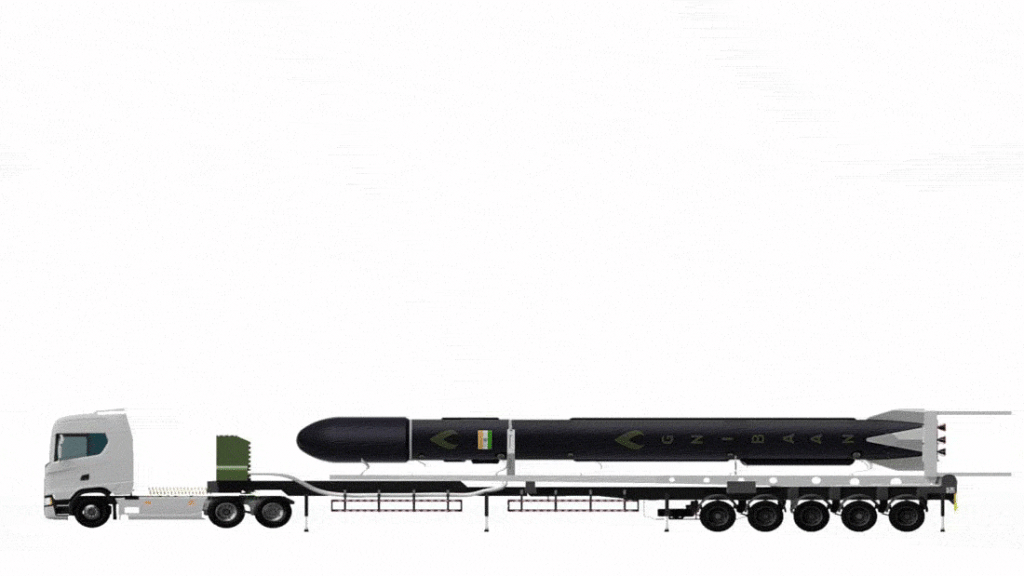Agnikul Cosmos, a burgeoning private aerospace entity, is poised to embark on a pioneering journey—the maiden test of its in-development launch vehicle. This mission, named the Sub-Orbital Technology Demonstrator (SOrTeD), is a succinct yet pivotal endeavor slated to endure just over two minutes, marking the dawn of a potentially transformative era in the nation’s satellite launch capabilities.
At the heart of the SOrTeD mission lies a singular ambition—to showcase the reliability and ingenuity of a domestically crafted system. The focal point of this demonstration is a single-stage launch vehicle propelled by the innovative Agnilet semi-cryogenic engine. Developed indigenously, the Agnilet harnesses the power of sub-cooled liquid oxygen, poised to propel the vehicle to new heights.
Standing tall at 6.2 meters, the launch vehicle is adorned with an elliptical nose cone, a steadfast guardian against the rigors of the journey ahead. Within its core, a cutting-edge avionics architecture, boasting the maiden implementation of an ethernet-based system, stands testament to Agnikul’s unwavering commitment to technological advancement. Complementing this architecture is a fully indigenous autopilot software, a testament to India’s burgeoning prowess in aerospace engineering.
The Agnibaan SOrTeD, fueled by sub-cooled Liquid Oxygen (LOX) and Aviation Turbine Fuel (ATF), is equipped with carbon composite fins, offering passive control amidst the tumult of ascent. Active pitch and yaw control are entrusted to a sophisticated two-plane gimbal system, ensuring precise vertical ascent—a ballet of engineering ingenuity.
Integral to the mission’s success is the collaboration with the Indian Space and Research Organisation (Isro), evident in the integration of Isro’s flight termination system. Nestled within the base shroud lies the crowning jewel of innovation—the Agnilet engine, heralded as the world’s first single-piece 3D-printed semi-cryogenic rocket engine.
From the moment of lift-off at India’s inaugural private launchpad, ALP-01, located at Satish Dhawan Space Centre in Sriharikota, to its anticipated splashdown just over two minutes later, each maneuver is meticulously orchestrated. The pitch-over maneuver, executed mere seconds into flight, heralds the vehicle’s graceful transition from vertical ascent to a predetermined trajectory. Wind biasing maneuvers at 39 seconds aim to counteract the caprices of wind, ensuring a steadfast path towards the heavens.
As the apogee is reached at 1 minute 29 seconds, and the descent commences, Agnikul Cosmos anticipates a wealth of invaluable data, shaping the trajectory of the Agnibaan launch vehicle. This inaugural flight, Mission-01, serves as a beacon of progress, charting the course for Agnikul’s orbital launch vehicle, the ‘Agnibaan.’
With ambitions set on capturing a share of the multi-billion dollar small satellite launch market, Agnikul Cosmos endeavors to carve a niche characterized by swift turnaround times and unparalleled efficiency. The outcome of Friday’s maiden test flight holds the key to the future trajectory of India’s ascent as a hub of small satellite launches—a testament to the nation’s unwavering spirit of innovation and exploration.

